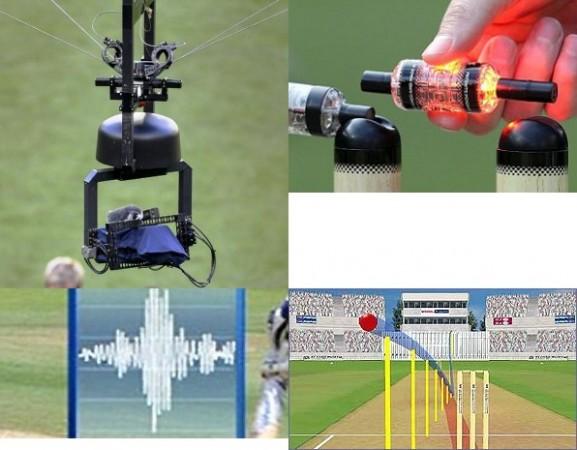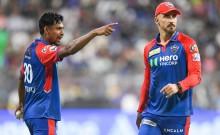
Did you know that until 19th century, all bowlers used to ball underhand? It was in 1862, when a British player left the field in protest over a 'No Ball' call for raising the arm over the shoulder for delivering a ball.
As a result, a regulation was passed to allow bowlers bowl overhand. The rule changed the game dramatically as the overhand bowling made it more complex for the batsman to judge the movement of the ball.
And till then Cricket has come a long way with several modifications with rules affecting the nature of game play. And now Cricket, like any other internationally acclaimed game integrates so many technologies to get accurate results. Of course, most of them still outrightly gets rejected by the purists. But still, several technological amendments are slowly becoming indispensible part of the game.
After studying hundreds of references on the evolution of Cricket we find out key technological implementation in the game of the gentleman's. Here they are.
Snickometer
Commonly known as Sniko, the technology is used in televising Cricket to graphically analyse sound and video and show the noise frequency to find out whether the ball touched the bat before going to the fielder.
Invented by British computer scientist Allan Plaskett, the Snickometer was introduced in the mid-90's and since then it has become a key technology to find out if the ball touched the bat or not. The Snickometer is frequently used by third umpires to take decisions on a complex catch appeal. The shape of the frequency helps the umpire to find out if the ball touched the bat on the way through to the wicketkeeper.
If there is a sound of leather on willow, which is usually a short sharp sound in synchrony with the ball passing the bat, then the ball has touched the bat. Other sounds such as the ball hitting the batsman's pads, or the bat hitting the pitch, and so on, tend to have a fatter shape on the sound waveform. However, this technology is used when the ground umpires refers to the third umpire.
Hot Spot
The Snicko was not considered as accurate enough, hence the Hot Spot was introduced to Cricket. It is an infra-red imaging system used to determine where the ball has struck before going to the fielder. The infra-red image shows a bright spot where contact friction from the ball has elevated the local temperature.
Where referrals to an off-field third umpire are permitted, the technology is used to enhance the on-field umpire's decision-making accuracy. Where referrals are not permitted, the technology is used primarily as an analysis aid for televised coverage.
The technology uses two cameras positioned on the either end of the ground and measures heat friction generated by a collision, such as ball on pad, ball on bat, ball on glove or anywhere else. The technology uses a subtraction technique of monochrome negative frames into a computer for finding out the ball contact precisely.
Hawk Eye (UDSC)
This technology is widely used among popular sports like Cricket, Tennis, Soccer, Hurling and more for visually tracking the ball and display a record of its statistical path through movie image. Developed by Dr Paul Hawkins from the UK, the system was originally implemented in 2001 for making the television broadcast more interactive.
The technology works via six or seven powerful cameras, normally positioned on the underside of the stadium roof, which track the ball from different angles. The video from the six cameras is then triangulated and combined to create a three-dimensional representation of the trajectory of the ball. Hawk-Eye is not infallible and is accurate to within 5mm (0.19-inch) but is generally trusted as an impartial second opinion in Cricket.
The Hawk Eye technology helps the umpire by watching where the ball pitched, location of impact with the batsmen's leg and projected path of the ball past batsman.
PitchVision
Developed by miSprot, a UK-based company, the technology has been widely used in the Cricket training system. The PitchVision is designed to be used by the full spectrum of Cricket users to provide players key performance feedback.
Priced almost 2/3rd of a bowling machine, the technology helps bowlers to measure and record bowlers pace, line, length, deviation, bounce and foot position on bowling crease ball by ball. The technology is able to show the map of bowler's line and length.
It also helps the batsman to see whether their shots would have pierced the field, identify which specific deliveries get you in trouble, compare performance against different bowlers, bat in real game scenarios against real field placements, see a 'Wagon Wheel' of shots from the session and confirm whether the batsman is constantly getting to the pitch of the ball
SpiderCam
The SpiderCam enables film and television cameras to move both vertically and horizontally over a predetermined area, typically the playing field of a sporting event such as a cricket pitch.
The SpiderCam operates with four motorised winches positioned at each corner at the base of the covered area, each of which controls a Kevlar cable connected to a gyro-stabilised camera-carrier, or dolly. By controlling the winding and unwinding of the cables, the system allows the dolly to reach any position in the three-dimensional space. The inputs of the SpiderCam "pilot" are processed by a software that forwards the commands to the winches via fibre optic cables.
The SpiderCam was first used in the Indian Cricket League followed by the semi finals of 2010 IPL in Champions League Twenty20 in South Africa.
Stump Camera
The Stump Camera is a small TV camera stuffed inside a hollow stump. The camera gets aligned vertically the camera view through a small window on the side of the stump via a mirror. These cameras help generate unique view of play for action replays specifically when a batsman gets bowled.
Ball Spin RPM/ Rev Counter
This technology is used to show the rotation speed of the ball. It is used when spinners are bowling, to show viewers the idea how much each ball is spinning. The technology is also able to show the RPM or revolution per minute through a counter, demonstrating how fast the ball is spinning after release.
Speed Gun
The Speed Gun is used to measure the speed of the ball from one end of the pitch to the other. The technology allows calculating the speed of bowler's delivery. Implemented first in 1999, the speed gun gets mounted on a pole and positioned next to the sight screen. The device relays a beam from the radar head to detect movement across the entire length of the pitch.
This technology actually tells us who is the fastest bowler and what was the highest speed the player achieved while setting up the record.
Bowling Machine
A Bowling Machine enables a batsman to practise and to expertise specific skills through repetition of the ball being bowled at a certain length, line and speed. It can also be used when there is no one available to bowl, or no one of the desired style or standard. There are various types of bowling machines, which are quite different in the ways they achieve the required delivery, though most allow the use of remote control, so that a coach can be closer to a batsman when the stroke is played.
The main mechanism of the machine consists of two heavy wheels, each driven by its own electric motor. These are mounted in a frame such that the wheels are in the same plane. A ball joint allows the machine a wide range of movement. The whole assembly is mounted on a sturdy tripod or other frame so that the plane of the wheels is roughly at the height that a typical bowler would release the ball. A chute delivers the ball between the wheels, protecting the coach's hands.
LED Bails
Using LED technology, the Bail glows once the ball struck the wicket/bail or the wicketkeeper whips off the bails. Developed by Bronte EcKermann, an Australian mechanical industrial designer, and created by South Australian manufacturer Zing International, the LED Bails are an expensive solution to notice falling of the bails.
The bails pack a microprocessor and sensor in each bail along with a low voltage battery to determine if the wicket is broken in one thousand fraction of a second.














